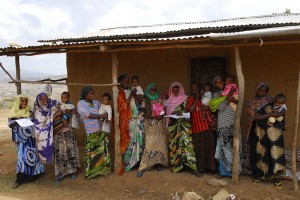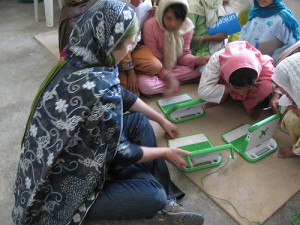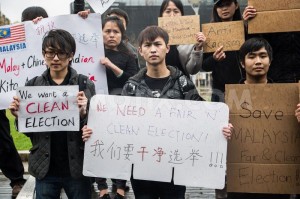There are many things that are stopping girls from being able to get an education, from lack of infrastructure to natural disasters. However, there is one large, looming obstacle that is keeping many girls from schools; child brides. It is estimated that in the next decade 14.2 million girls will be married before their 18th birthday. Should this figure end up being true, it will result in 14.2 million girls who will be pulled from school; 14.2 million girls who will not receive skills to help the prosperity of their country.
this figure end up being true, it will result in 14.2 million girls who will be pulled from school; 14.2 million girls who will not receive skills to help the prosperity of their country.
As I have mentioned in past pieces, removing young girls from their education has a negative effect on the girls, their families, and on their countries as a whole. When girls are married at such young ages they are generally pulled from school and often get pregnant quickly meaning that their chances of returning to school are slim-to-none.
One country where Child Brides are a large phenomenon is Ethopia. According to UNICEF, 49% of girls in Ethiopia are married by age 18, with 24% of them being married before age 15. There are many pieces written online about what people have witnessed regarding Child Brides in Ethiopia. Many of them explain that most of these girls want to return to school. For the girls it is not just a chance to get an education, which they do value, but it is also the chance to make friends and to gain experiences besides those they make within the home.
In one account of a child bride in Ethiopia, Enana, a seventeen-year-old with a four year old son, talks about her  experience as a child bride. She relates how she felt betrayed by her parents, and how she didn’t even know how old she was at the time. By doing the math, she was at oldest thirteen if she is around seventeen and already has a four year old child. One of the quotes she relays is “I didn’t even know how to clean myself,” yet here she was, being sent off to take care of others and raise her own family.
experience as a child bride. She relates how she felt betrayed by her parents, and how she didn’t even know how old she was at the time. By doing the math, she was at oldest thirteen if she is around seventeen and already has a four year old child. One of the quotes she relays is “I didn’t even know how to clean myself,” yet here she was, being sent off to take care of others and raise her own family.
This also means that Enana was just one of the many girls who experience their first sexual encounter at age 13. In her account, Enana talks about how frightened she was but how her parents punished her and sent her back to her husband. Unfortunately, this is a not an uncommon situation in Ethiopia, however, there are many non-governmental organizations (NGO) popping up to help these girls deal with the unfortunate situations they are put in.
One of these is TESFA – which means “hope” in the Amharic, the native language. Funded by Nike, TESFA works Continue reading

 February, one of Singapore’s
February, one of Singapore’s  cholesterol, diabetes, and high blood pressure
cholesterol, diabetes, and high blood pressure of primary education in Cambodia; meaning more children are going to school, but the literacy rate is almost stagnant. According to the World Bank,
of primary education in Cambodia; meaning more children are going to school, but the literacy rate is almost stagnant. According to the World Bank,  are due to the weakness and lack of quality in the educational system. There is obviously something lacking if the majority of Cambodian children are going to school, but they still cannot read or write. There seems to be a lack of guidance from the government and schools on how to improve the education system.
are due to the weakness and lack of quality in the educational system. There is obviously something lacking if the majority of Cambodian children are going to school, but they still cannot read or write. There seems to be a lack of guidance from the government and schools on how to improve the education system. and feeling part of a community are foundations children can build on as they grow, and these provide safe havens from which they can venture forth, and return to when they have ventured too far.
and feeling part of a community are foundations children can build on as they grow, and these provide safe havens from which they can venture forth, and return to when they have ventured too far.  child. If your child hurts, you hurt for them. if your child has fears, you try to calm them. If your child has questions, you try to answer them honestly. Then you send them out into the village to learn how to adapt, communicate with others, and become contributors to the community where they live. As parents we hope the foundation we have
child. If your child hurts, you hurt for them. if your child has fears, you try to calm them. If your child has questions, you try to answer them honestly. Then you send them out into the village to learn how to adapt, communicate with others, and become contributors to the community where they live. As parents we hope the foundation we have  Cultural Organization (UNESCO) said that
Cultural Organization (UNESCO) said that 

 Coalition
Coalition Let’s look more closely to the current issue in Malaysia. I mentioned before the government acts on race-based policies. It seems like the current government is only acting on its own self-interest. That being said how can you trust a government that discriminates against certain groups? How can you trust the election process if you cannot even trust the government? To contest against the government, the opposition group
Let’s look more closely to the current issue in Malaysia. I mentioned before the government acts on race-based policies. It seems like the current government is only acting on its own self-interest. That being said how can you trust a government that discriminates against certain groups? How can you trust the election process if you cannot even trust the government? To contest against the government, the opposition group 



